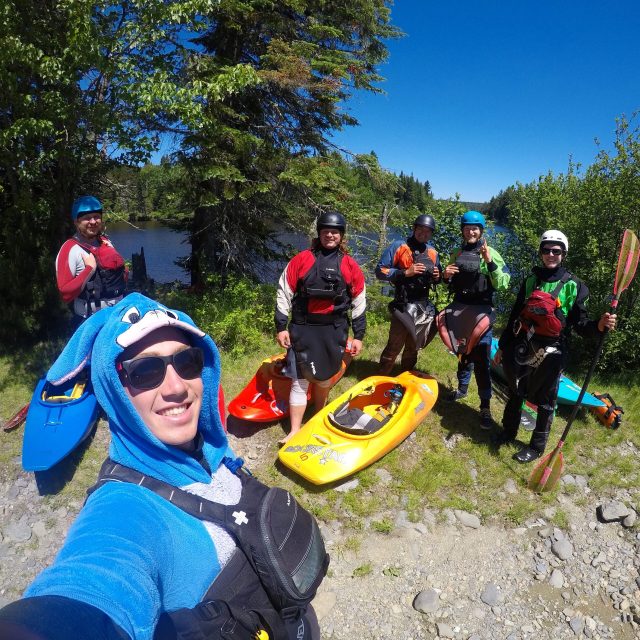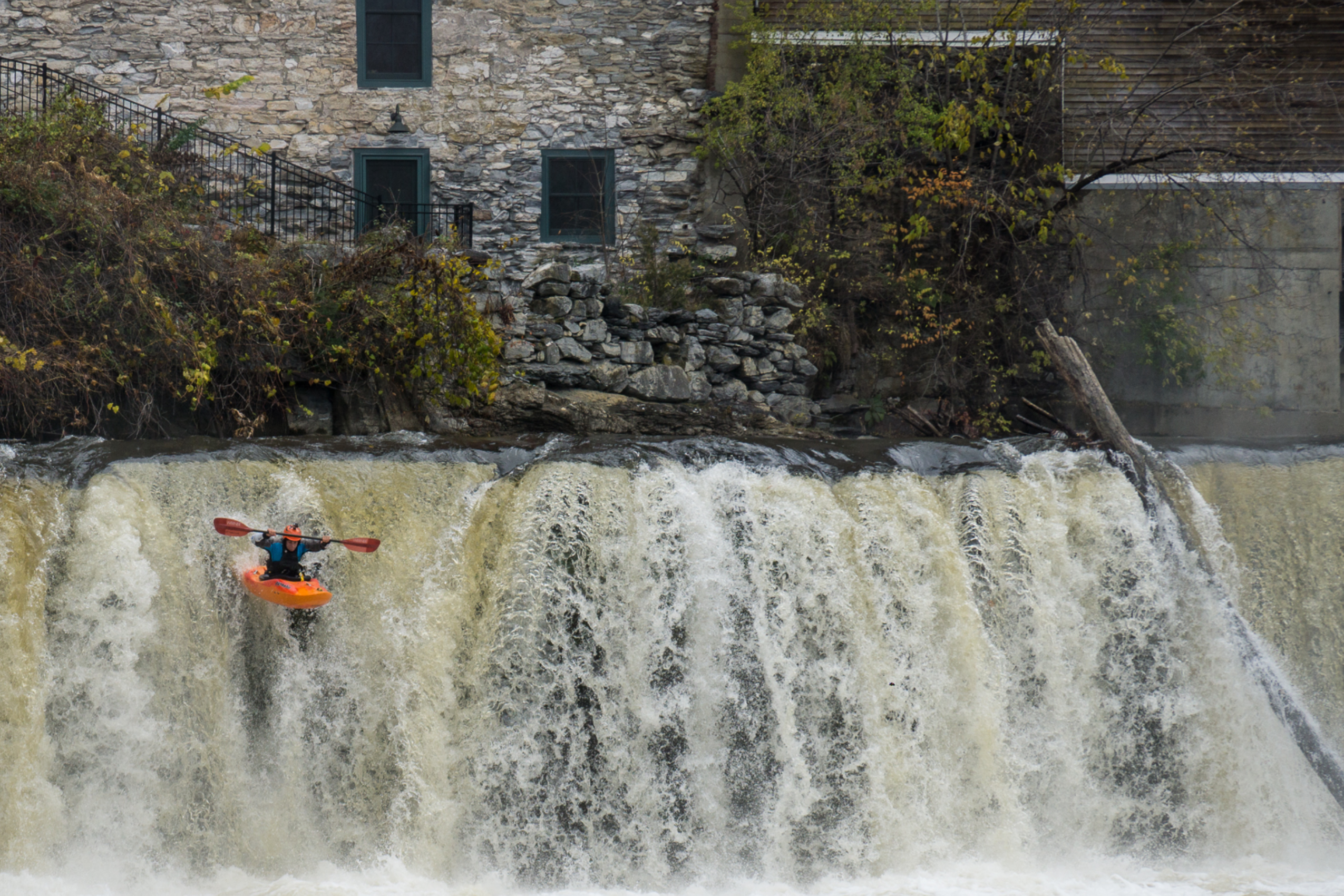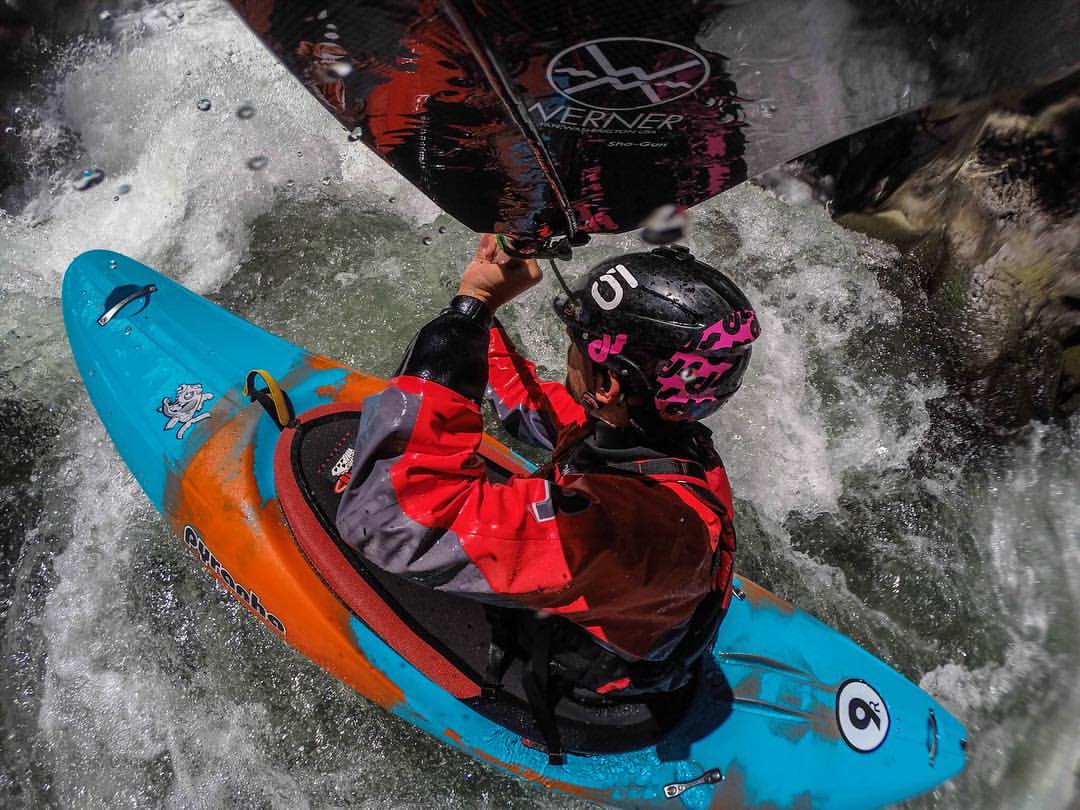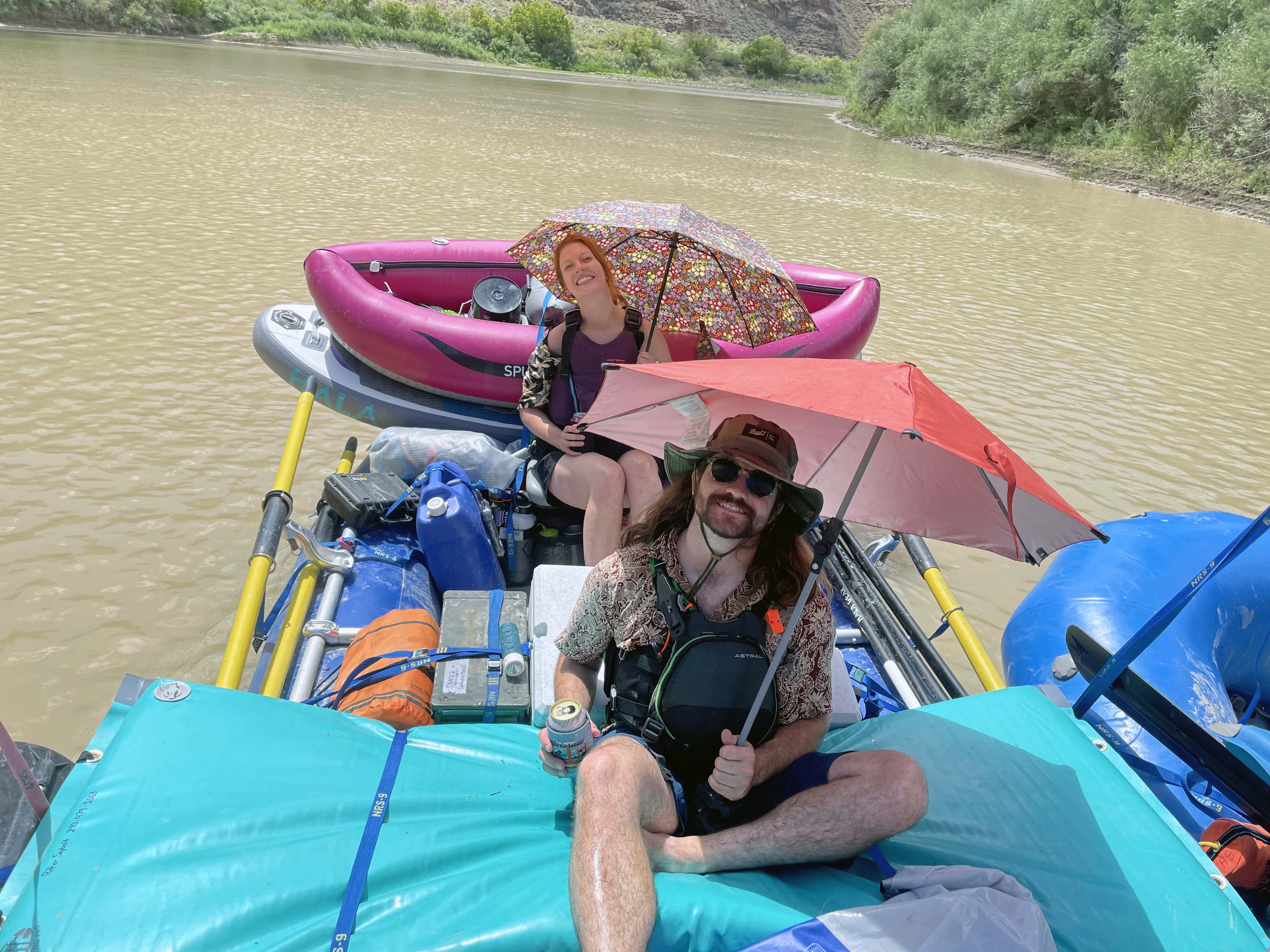We asked experienced paddler Nick Gilbert his tips on how to dress for the fall paddling season. Here's what he said:
So, what's up with fall paddling?
While many people outside the sport think this is the time of year to put your kayak back in the shed or roll your raft for the season, whitewater paddlers know that with the proper gear the paddling season is anything but over.
Here in Colorado, runs like Gore Canyon, Waterton Canyon, Split Mountain Gorge, the Upper Colorado, the Royal Gorge on the Arkansas, and the Gunnison River will all continue to run all fall and provide ample paddling opportunities often through November or later.
In the Pacific Northwest and Southeast, fall means rain is just around the corner and the rivers are about to come back to life. There are also several recreational dam releases happening in these prime locations, as well as a few dam releases in the Northeast during the months of September and October

Why does dressing appropriately for fall paddling matter?
While "Dress to Swim" is an age-old cliche in whitewater paddling, neglecting to dress for a swim in the river can quickly become a serious safety hazard – especially during the colder seasons.
While a bit of cold water in the summer might be a minor inconvenience, in cooler conditions a swim can be life-threatening. Cold air temperature combined with cold water provides less opportunity for your body to recover once your core temperature has been lowered.
Most paddlers understand the basics about hypothermia: When dressed inappropriately, it only takes a few moments in cold water before decision-making and fine motor skills are greatly reduced. An extended exposure can lead to more serious consequences that can require hospital visits or worse.
Even if you're paddling a section of river well below your skill level, consider the other paddlers in your group when you are dressing for the river. Neglecting to wear layers that will keep you warm in the water can render you useless should another member of your group need assistance or rescue.
Don’t be ‘that kayaker’ who only wore a drytop and now can’t wade out into the river to help a friend in need!

Are drysuits *really* necessary?
After a few seasons paddling in Colorado, kayakers quickly come to understand the importance of this critical piece of gear. After paddling snowmelt rivers, many Coloradans continue to wear drysuits through the summer.
Now that temps are starting to drop, drysuits are as important as ever. While most paddlers understand that a full-body waterproof suit with latex gaskets will keep you warm by keeping you dry, few understand just how versatile these suits are until they own one.

One of the most crucial features of a drysuit is the ability to add and subtract layers suitable for any condition under the suit. Personally, I have worn just about every piece of clothing I own under my drysuit.
Once the snow starts, insulating with down puffy layers under your drysuit can keep you paddling through any conditions. If there's a warm spell during the fall paddling season, a light t-shirt and long underwear are all you need to fend off frigid snow melt on a hot day.
For a top of the line option, Kokatat Gore-TEX drysuits are well known for their durability and dryness. For a great value, we like the Level Six Odin Drysuit.

What are some of the more popular base layers paddlers wear during the fall?
It's Time to Shake the Dust off your Onesie
Here at CKS Online we live and die by the onesie. We are true believers in the power of a one-piece layering system and openly advocate to the rest of the world just how incredible onesies are. Many different brands offer onesies (IR, Level Six, Kokatat), and this season we have really been enjoying the Hot Fuzz Fleece Unisuit by Level Six.
Long gone are the days of fixing wedgies under your drysuit or discomfort around your waist where your top and bottom layers bunch together.
Onesies are also useful off the river. They are great to wear
- Around the house
- For other outdoor pursuits (especially snow sports)
- During a casual Friday at the office.
If a onesie isn’t your thing or if you need more or less layers than the onesie provides, the key to comfortable layering is synthetic materials.
Fleece works wonders under a drysuit as it provides a bit of thickness and loft to keep the cold water far from your skin. Natural merino wool is great, too.

Are there drysuit alternatives?
While nothing will replace the comfort and warmth of a drysuit on a cold day, anyone who has been around the industry for a few decades will remind you that not too long ago, fall and winter paddling attire consisted of a windbreaker and 4 wool sweaters. Today, a dry top, dry pants, or a splash top plus a neoprene wetsuit can create a good budget option for those not ready to make the leap to a drysuit.
Dry tops are versatile and popular among kayakers. Drytops keep your bottom half dry, except in the case of a swim
Dry pants are popular among rafters, who often take more splashes to the lower half.
Either way, when combined with a wetsuit these layers can be suitable for cold weather paddling for people who are more wiling to "rough it.’"

Do you need other Accessories to Keep you Warm?
Even with a drysuit, your head and hands are still exposed to cold water while paddling. To keep your hands warm in cold water there are two main options, neoprene gloves or neoprene pogies.
Pogies are popular among kayakers, as these attach to your paddle and allow you to slide your hand inside a warm neoprene pocket. Pogies have the advantage of allowing you to still feel your paddle with your bare hands which many paddlers think makes for a better feel than gloves. This also gives you more dexterity over gloves.
Gloves have the advantage of keeping your hands warm at all times, not only when you are holding your paddle. Gloves hold an advantage in rescue scenarios or while scouting or portaging. Most rafters prefer these, as pogies are not readily available for a rowing rig.
For pogies, we like the boxy shape and neoprene wrist enclosure featured on the Immersion Research Microwave Pogies. For gloves, we find the Level Six Proton Gloves strike a great balance between warmth and comfort.
While keeping your hands warm in cold water is a luxury most paddlers opt for, keeping your head warm is essential to help prevent hypothermia in extreme conditions.
For kayakers especially, we recommend wearing a neoprene skull cap that covers the ears on the cold days such as the Shred Ready Helmet liner. Additionally, a helmet with ear flaps and without vent holes such as the Sweet Protection Rocker goes a long way to insulate your head.
For rafters, we specifically recommend thermal socks, like the NRS Hydroskin 0.5 Wetsock. Your bottom half is more likely to get get wet and cold when sitting in a rubber vessel. Wetsocks provide that extra bit of insulation in an area that matters most.

Do you have any other fall weather pro-tips?
A few final tips we think can help keep you warm on the cold days:
1. Keep Your Boat Dry
For kayakers, keeping your boat dry can help to make sure you are warmer while paddling. Check that all screws on your boat are tight and even consider adding a bead of Aquaseal to make sure any screws in your boat are fully waterproof and do not leak.
2. PFDs are for Warmth
PFDs are crucial for floatation but also work wonders to keep your core warm. Put your PFD on early at the put in and keep it on at the takeout while waiting for shuttle or until you have dry clothes ready. A PFD with maximum coverage like the Astral Green Jacket or the Kokatat Maximus Centurion provides additional warmth over low-profile PFD options.
3. Check your old gear
Consider replacing or repairing your spray skirt if yours is old and leaky. Replace any ripped, torn, or stretched out drywear gaskets.
4. The Hidden Hat Trick
On the coldest days, bring a beanie and stuff it into your drysuit while you paddle. At the takeout and while you are shuttling, replace your cold, wet helmet with the warm, dry, 98.6 degree Fahrenheit beanie you carried down river in your drysuit.
What tips do you have to keep warm during fall river paddling? We'd love to hear them - comment below!

Original post October 6, 2020.




